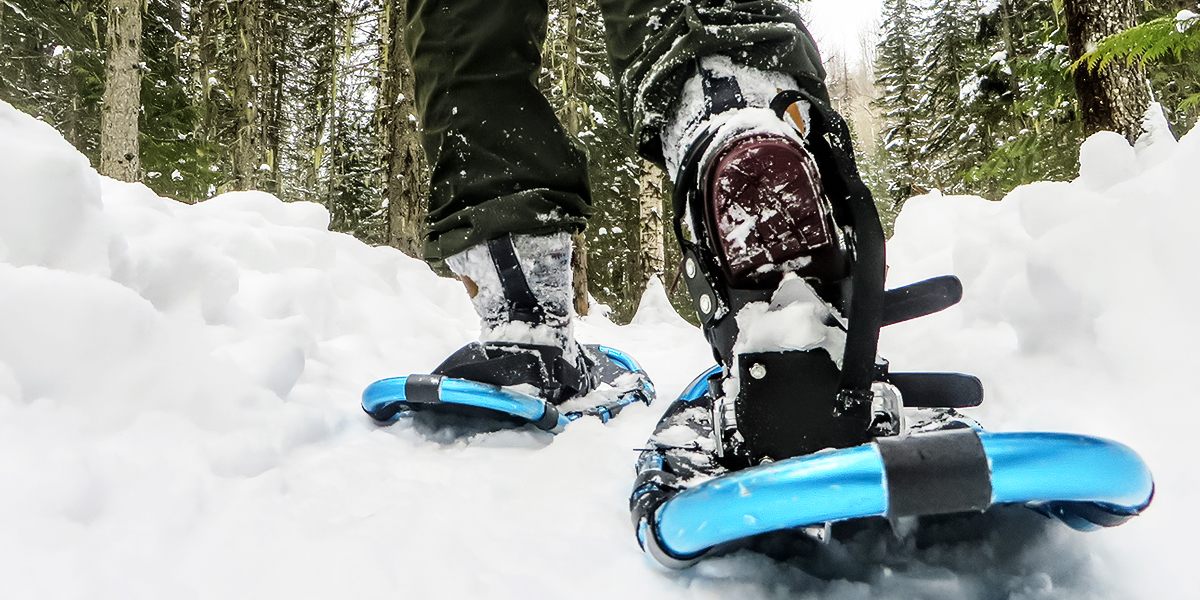
Hundreds of years ago, trappers, traders, and anyone living in areas where deep snowfall prevailed used snowshoes to get around. Up until recently, the designs hadn’t changed much, which meant snowshoes looked more like a set of tennis rackets and functioned just about as well. Today’s snowshoes have been redesigned to make any trek through the snow and ice as easy and enjoyable as possible. With the right gear and mindset, you can enjoy a day in the snow too.
Picking the Right Snowshoes
In all honesty, snowshoeing is just hiking in the snow. Picking the right pair of snowshoes will make that hike a lot easier. The general rule is: the larger the snowshoe, the more floatation you will get. That’s because the snowshoes displace your body’s weight. While snowshoes are made from very light materials, the bigger you go the more they will weigh.
Before you buy a pair, try renting snowshoes and poles. Just venture out to your favorite ski area or try one of these local favorites. They’ll show you how.
Mt Hood Meadows503-337-2222
Eurosports
Sisters, Oregon
541-549-2471
Willamette Pass
541-345-SNOW
Northwest Outdoor Store
Medford, Oregon
541-245-4000
Mt. Baker Ski Area
Bellingham, Washington
360-734-6771
Mission Ridge Ski and Board Resort
Wenatchee, WA
509-663-6543
If you’re just starting out and sticking to simple trails, all you need are a pair of recreational models. For more steep terrain and backcountry hikes, be sure to get a pair with added traction.
Coastal tip: hiking poles make snowshoeing much easier, especially for newcomers and those with iffy knees. Choose poles that are adjustable. To properly adjust your poles, give them just enough length so that your elbows are bent at a 90-degree angle when the pole is firmly in the show.
Lace Up a Good Pair of Boots
As long as you have a pair of hiking boots that are warm, waterproof, breathable, and comfortable, you’re set. As you progress in the sport, you’ll discover the type and style of boots you prefer for your winter hikes. When you do, you’ll find them in the footwear department of your nearby Coastal Farm & Ranch.
Coastal tip: if you have a pair of boot gaiters for hunting, wear them snowshoeing too. They will keep the snow out of your boots as you go. Don’t have a pair? Get some. You’ll thank yourself later.
Layer Your Clothing
Just because you’re out in the snow doesn’t mean you want to bundle up. Snowshoeing is exercise, and you will heat up quickly. Instead, pack your winter emergency gear (parka, thick gloves, emergency blanket, first aid kit, fire starter, whistle, compass, balaclava (face protection), etc.) in a backpack and start with several light layers of synthetics or wool.
Simply wear a wicking layer (long underwear from top to bottom), an insulation layer (thermal shirt and pants if necessary), and a weather layer (waterproof shell). A hat and gloves are fine, but depending on the weather you will likely pack those away after a mile or two. Be sure to wear a few layers of socks.
Coastal tip: bring along a pair of polarized sunglasses to protect your eyes from the sun’s glare.
Coastal has Your Outdoor Winter Gear
If you can wear it hunting or snowmobiling, you can probably use it snowshoeing. Coastal has what you need to stay warm and comfortable whatever you do in the great outdoors. Swing by your nearby location where you’ll find everything from long underwear to gloves, hats, socks, jackets, and more.
